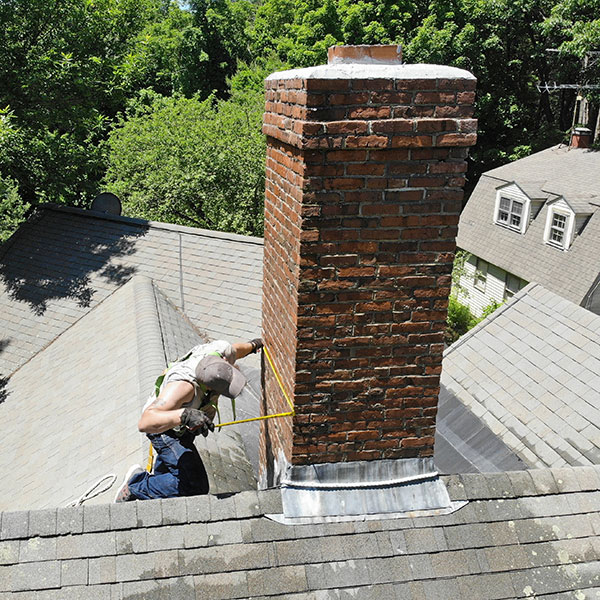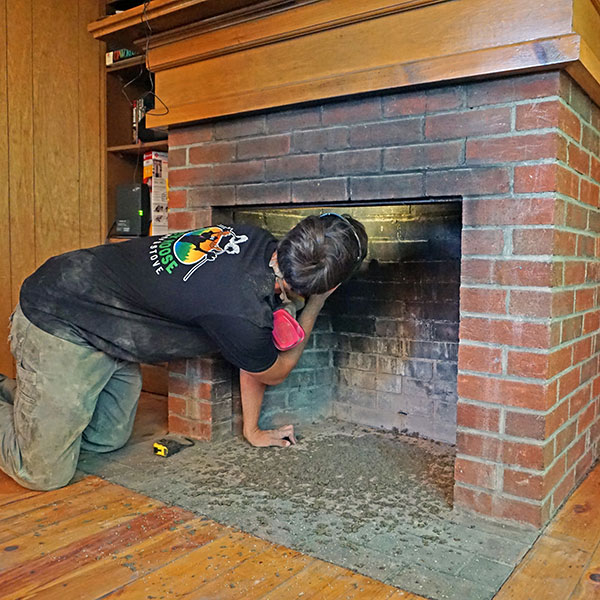 While you’re sitting back and warming up to the glow of a burning fire in the fireplace, ash, soot, and other debris is collecting in the chimney. While cleaning is not a chore that everyone likes to do, keeping the fireplace clean in between professional cleanings can minimize health and safety risks. It can also help prevent premature wear and tear that lead to more expensive repairs. Here are a few tips to stay ahead of your fireplace and chimney maintenance.
While you’re sitting back and warming up to the glow of a burning fire in the fireplace, ash, soot, and other debris is collecting in the chimney. While cleaning is not a chore that everyone likes to do, keeping the fireplace clean in between professional cleanings can minimize health and safety risks. It can also help prevent premature wear and tear that lead to more expensive repairs. Here are a few tips to stay ahead of your fireplace and chimney maintenance.
Inspect for Masonry Damage
Masonry chimneys are built with porous materials, and freezing winter nights and warm days can eventually cause masonry cracks. Walk around the chimney exterior periodically throughout the year and check for damaged or cracked bricks, gaps in the mortar joints, and pieces of brick and mortar on the ground at the base of the chimney. Contact a chimney professional as soon as possible to repair any damage. Even minor damage should be repaired quickly to prevent further damage and more expensive repairs later.
Keep the Fireplace Clean
Maintaining a clean fireplace can minimize repairs. The ashes from burning wood that continues to collect in the fireplace can attract moisture. Moisture is the Achilles heel to a fireplace and chimney. It softens the masonry causing the bricks to crumble, increasing the risk of fire and exposure to carbon monoxide fumes. After the fire burns out and the ashes are cool, sweep the ashes into a metal container for disposal or recycle in your garden. When burning firewood, a one to two-inch layer of ash will help the wood combust more completely and burn a hotter fire. You can also use a vacuum to clean any remaining debris in the fireplace.
 Burn Seasoned Firewood
Burn Seasoned Firewood
Seasoned firewood is wood that has been dried out for at least six months. The lower moisture content in seasoned wood will help you burn more efficient and hotter fires. The wood will also burn more slowly, requiring less wood fuel to keep the fire going longer. Fresh or “green” wood has a high moisture content. It will burn fast and at a lower temperature. It will also emit more smoke and creosote, requiring the chimney sweep to clean the chimney more frequently.
Make Sure the Damper Works
When not using the fireplace, closing the damper will reduce energy loss and protect the fireplace from moisture intrusion. However, the metal damper can rust, warp, or corrode, preventing it from operating correctly. Also, the rubber gasket can wear out, leaving gaps for air and moisture to get through. Periodically test the damper to ensure it opens and closes with ease.
Watch for Signs of a Water Leak
Anytime water is leaking into the fireplace is a cause of concern because it can cause extensive damage to the masonry and internal components. Some of the signs of a water leak include water in the firebox, water stains on the ceiling or near the fireplace, discoloration, and softening bricks and mortar. If you suspect a water leak, contact a chimney professional as soon as possible so they can locate and repair the leak before more damage occurs.
Hire A Chimney Sweep to Inspect and Clean the Chimney
The best way to stay ahead of your fireplace and chimney maintenance is with an annual chimney inspection and cleaning. Scheduling a professional chimney sweep to inspect and clean the chimney will help prevent premature failure of the chimney structure and its internal components. A chimney sweep will also ensure your chimney is not a fire or safety hazard, so it will keep your family safe while you’re enjoying the warmth of a burning fire in the fireplace during the winter.


